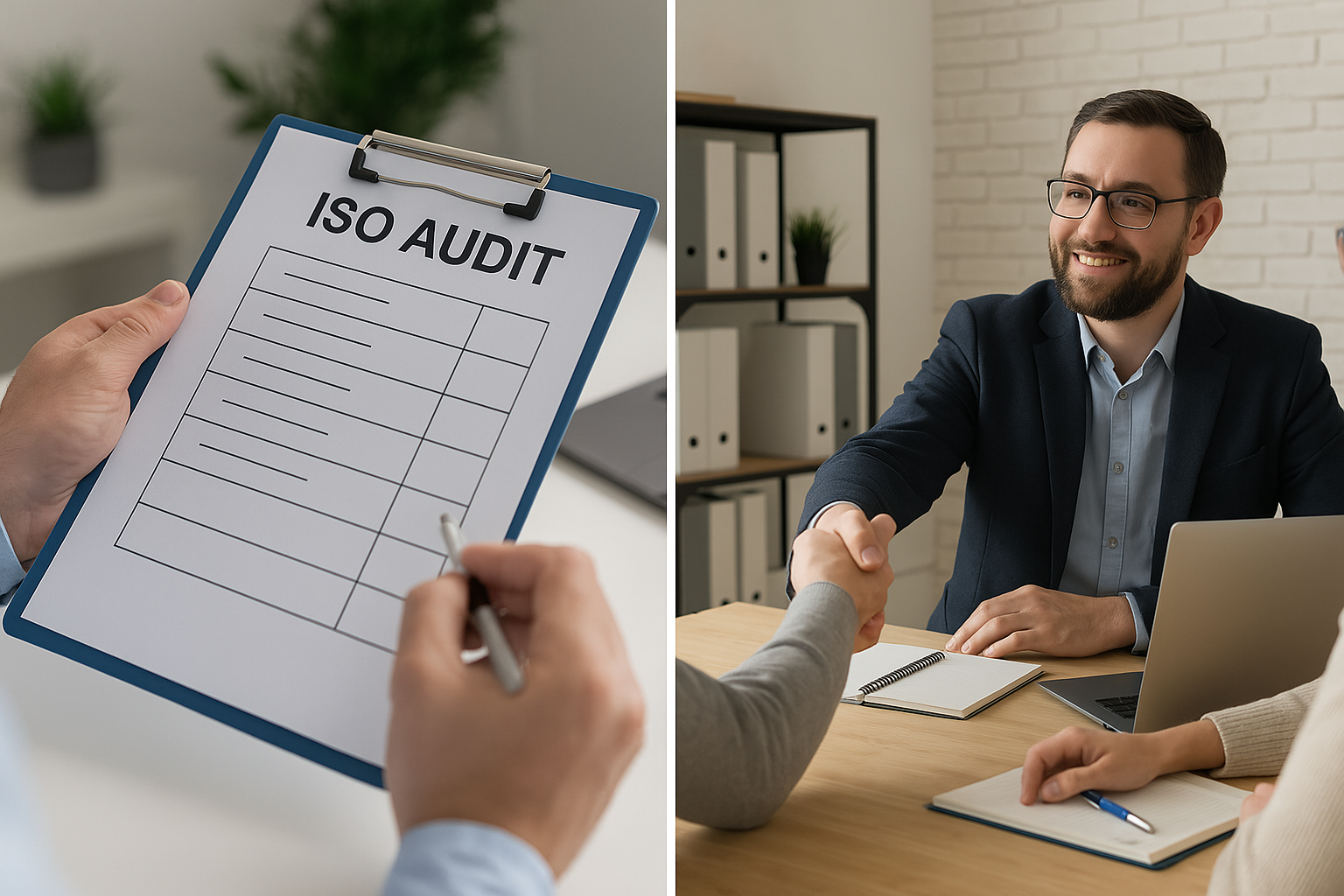
What Happens During an ISO Audit? A Step-by-Step Guide
Achieving and maintaining ISO certification is essential for businesses looking to improve quality, efficiency, compliance, and customer trust. However, many organizations find the ISO audit process intimidating due to its detailed assessments and strict compliance checks.
So, what exactly happens during an ISO audit, and how can businesses prepare? This step-by-step guide will walk you through the ISO audit process, from planning to certification, ensuring a smooth and successful audit experience.
1. What is an ISO Audit?
An ISO audit is a systematic review of a company’s processes, policies, and procedures to ensure compliance with ISO standards such as:
📌 ISO 9001 – Quality Management System (QMS)
📌 ISO 14001 – Environmental Management System (EMS)
📌 ISO 27001 – Information Security Management System (ISMS)
📌 ISO 45001 – Occupational Health & Safety (OHS)
📌 ISO 22000 – Food Safety Management System (FSMS)
The audit ensures that an organization:
✅ Meets ISO requirements for certification.
✅ Identifies areas for improvement in management systems.
✅ Ensures compliance with legal and industry standards.
ISO audits can be internal (conducted by the organization itself) or external (performed by a certification body).
2. Types of ISO Audits
ISO audits fall into three main categories:
a) Internal Audit (First-Party Audit)
✔ Conducted by the company’s internal audit team or external consultants.
✔ Helps identify non-conformities before the certification audit.
✔ Ensures ongoing compliance, efficiency, and process improvement.
b) Certification Audit (Third-Party Audit)
✔ Conducted by a certification body (e.g., BSI, TÜV, DNV, SGS).
✔ Determines whether an organization qualifies for ISO certification.
✔ Includes document reviews, site inspections, and employee interviews.
c) Surveillance & Recertification Audits
✔ Annual surveillance audits ensure continued compliance after certification.
✔ Recertification audits (every three years) confirm ongoing ISO compliance.
✔ Prevents businesses from losing their ISO certification due to non-compliance.
3. What Happens During an ISO Audit? A Step-by-Step Guide
Step 1: Audit Planning & Scheduling
📌 The audit team (internal or external) schedules the audit several weeks in advance.
📌 The company receives an audit plan outlining the scope, objectives, and timeline.
📌 Departments, processes, and key personnel involved in the audit are informed.
Step 2: Opening Meeting with the Audit Team
📌 The auditor(s) introduce themselves and explain the audit process.
📌 The organization confirms readiness and clarifies any concerns.
📌 Key managers and employees review audit objectives and expectations.
Step 3: Document Review & Compliance Checks
📌 Auditors assess ISO documentation, policies, and procedures to ensure compliance.
📌 Key documents reviewed include:
✔ Quality or management system manuals
✔ Risk assessments and corrective action records
✔ Internal audit reports and training records
✔ Process workflows, supplier evaluations, and customer feedback
📌 Any missing or outdated documentation may result in non-conformities.
Step 4: On-Site Inspection & Employee Interviews
📌 Auditors visit facilities, production lines, and office areas to assess compliance.
📌 Employees may be asked about:
✔ Awareness of ISO policies and procedures
✔ How they handle compliance-related tasks
✔ Incident reporting, risk management, and safety protocols
📌 The goal is to ensure employees follow ISO standards in daily operations.
Step 5: Identifying Non-Conformities & Improvement Areas
📌 The auditor will document any issues or non-conformities, such as:
❌ Gaps in documentation or record-keeping
❌ Lack of employee awareness or improper training
❌ Failure to follow ISO procedures in specific processes
📌 Auditors categorize findings as:
✔ Major Non-Conformities – Critical issues that must be corrected before certification.
✔ Minor Non-Conformities – Small issues that require improvement but don’t prevent certification.
✔ Observations – Improvement suggestions to enhance performance.
Step 6: Closing Meeting & Audit Report Presentation
📌 Auditors discuss audit findings, strengths, and areas for improvement.
📌 The company receives an audit report detailing:
✔ Compliant areas
✔ Non-conformities & corrective actions required
✔ Recommendations for continuous improvement
📌 If no major non-conformities are found, the company is recommended for ISO certification.
4. What Happens After the Audit?
✔ Corrective Actions & Continuous Improvement
📌 Businesses must address non-conformities within a given timeframe.
📌 Corrective actions may include:
✔ Updating ISO policies and procedures
✔ Providing additional employee training
✔ Implementing new risk management measures
✔ ISO Certification Approval (If Applicable)
📌 If the audit is successful, the certification body issues the ISO certificate.
📌 The certificate is valid for three years, with annual surveillance audits.
✔ Ongoing Compliance & Recertification
📌 Companies must maintain compliance through regular internal audits.
📌 A recertification audit is conducted every three years to renew certification.
5. How to Prepare for a Successful ISO Audit
🔹 Conduct Internal Audits Regularly – Identify and fix compliance issues before the external audit.
🔹 Ensure Employees Are ISO-Trained – Train staff on policies, procedures, and compliance responsibilities.
🔹 Keep Documentation Updated – Ensure all ISO manuals, reports, and records are current.
🔹 Implement a Continuous Improvement Culture – Regularly review and improve processes, risk management, and corrective actions.
6. Conclusion: Why ISO Audits Are Essential for Business Success
An ISO audit is more than just a compliance check—it’s an opportunity to:
✅ Enhance operational efficiency & risk management
✅ Strengthen customer trust & market credibility
✅ Ensure long-term compliance with global standards
✅ Drive continuous improvement & business growth
By understanding the audit process and preparing proactively, businesses can successfully achieve and maintain ISO certification, staying ahead in their industry.
💡 Need help with ISO audit preparation? Contact us today to ensure your business is ISO-ready and set up for success! 🚀✅